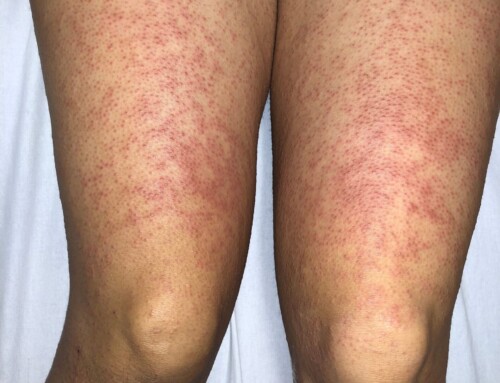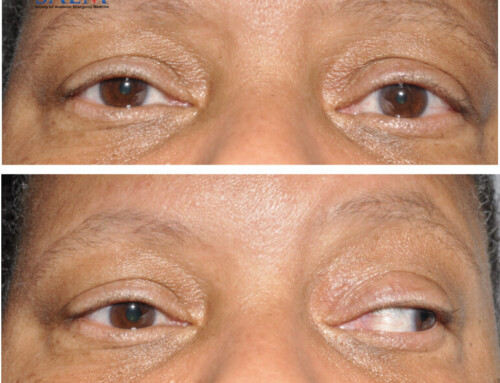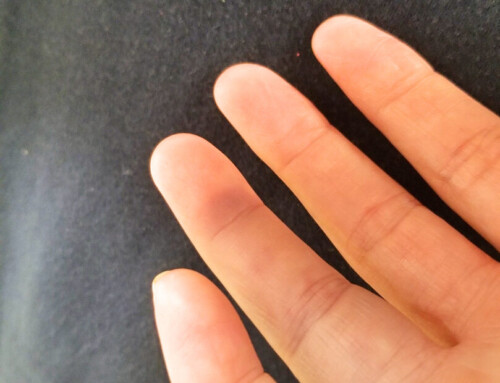
A 64-year-old Caucasian male with a history of alcohol use disorder and tobacco use disorder presents with painless bilateral hand contractures that have been worsening for the past several months. He denies any recent trauma, fever, chills, or decreased sensation. The patient works as a construction worker.
Vitals: BP 143/83 ; HR 94; RR 18; T 98.6°F; O2 saturation 98% on room air Musculoskeletal: He has bilateral palmar contractures proximal to the fourth digits. No tenderness to palpation along digits. Passive extension of the digits is limited bilaterally but does not elicit pain. When asked to place his palm flat on the table, there is notable contracture of the bilateral fourth metacarpophalangeal (MCP) joint (a positive Hueston’s tabletop test). No erythema or cellulitic changes are appreciated. Non-contributory Dupuytren’s Contracture is a clinical diagnosis that most commonly presents as painless loss of extension of the fourth and fifth phalanx. Collagen deposition and subsequent fibrosis within the palmar fascia cause nodule formation along the flexor tendons near the distal palmar crease. Clinically this appears as puckering, tethering, and/or dimpling of the skin of the palm (as shown in the photograph). Accompanying joint rigidity and loss of full extension of the digit typically can take years to fully develop. Pain or inflammatory findings are not commonly seen unless there is an underlying tenosynovitis. Without signs of infection, outpatient management with Hand Surgery is the appropriate initial management. Risk factors for the development of Dupuytren’s contracture include northern European descent, age greater than 50 years, and diabetes. The condition has been associated with tobacco use disorder, alcohol use disorder, jobs that require repetitive handling tasks or vibration, and localized fibrotic pathologies including Peyronie’s disease.Take-Home Points
Copyright
Images and cases from the Society of Academic Emergency Medicine (SAEM) Clinical Images Exhibit at the 2023 SAEM Annual Meeting | Copyrighted by SAEM 2023 – all rights reserved. View other cases from this Clinical Image Series on ALiEM.

Victor Flores-Cortez, MD
Boston Medical Center

Latest posts by Victor Flores-Cortez, MD (see all)
- SAEM Clinical Images Series: Insidiously Contracted Hand - September 15, 2023

Shahid Dodson, MD
Boston Medical Center

Latest posts by Shahid Dodson, MD (see all)
- SAEM Clinical Images Series: Insidiously Contracted Hand - September 15, 2023

Kelly Mayo, MD
Boston Medical Center

Latest posts by Kelly Mayo, MD (see all)
- SAEM Clinical Images Series: Insidiously Contracted Hand - September 15, 2023

Andrew Mittelman, MD

Latest posts by Andrew Mittelman, MD (see all)
- SAEM Clinical Images Series: Bulge in the Belly - December 8, 2023
- SAEM Clinical Images Series: Man with a Recurrent Rash - November 10, 2023
- SAEM Clinical Images Series: Wolf in Sheep’s Clothing - November 6, 2023



